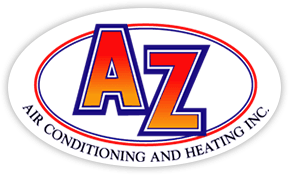When the weather starts to cool off, you are probably wondering about how you’ll take full advantage of your heating and cooling. After all, HVAC costs routinely make up a big piece of your monthly electric bill. To try and find ways to save, some owners look closely at their thermostat. Maybe there’s a setting they should use to boost efficiency?
The majority of thermostats include both a ‘Fan’ or ‘Fan On’ setting. But if the fan is going during a normal cycle, what does the fan setting offer for your HVAC system? This guide should help. We’ll share precisely what the fan setting is and when you can use it to cut costs over the summer or winter.
What Is the Fan Setting on My Thermostat?
For the majority of thermostats, the fan setting means that the system’s blower fan remains on. A few furnaces may continue to run at a low level with this setting, but in most cases heating or cooling isn’t being produced. The ‘Auto’ setting, conversely, will run the fan through a heating or cooling cycle and turn it off after the cycle is complete.
There are advantages and disadvantages to switching on the fan setting on your thermostat, and whether you do or don’t {will|can|should]] depend on your unique comfort preferences.
Advantages to switching to the Fan/On setting:
- You can keep the temperature in every room more uniform by allowing the fan to keep running.
- Indoor air quality can increase as steady airflow will keep moving airborne particles through the air filter.
- A smaller amount of start-stop cycles for the blower fan helps expand its life span. Because the air handler is often a component of the furnace, this means you might avoid needing furnace repair.
Drawbacks to using the Fan/On setting:
- A continuous fan can add to your energy bills slightly.
- Nonstop airflow may clog your air filter up more quickly, increasing the frequency you should replace it.
{Choosing Between|Should My Thermostat Be on|Which Setting for My Thermostat? Fan or Auto in Each Season
Through the summer, warm air may linger in unfinished spaces like the attic or an attached garage. If you use the fan setting, your HVAC system may gradually move this warm air into the rest of your home, pushing the HVAC system to work more to maintain the set temperature. In extreme heat, this can result in needing AC repair more quickly as wear and tear increases.
The reverse can take place during the winter. Cooler spaces such as a basement will hold onto cooler air, which will eventually flow into the rest of your home. Keeping the fan on may pull more cold air upward, increasing the amount of heating you need to remain warm.
If you’re still trying to decide if you should use the fan/on setting, remember that every home and family’s comfort needs will vary. Leaving the HVAC system’s fan on could be best for you if:
Someone in your household suffers from allergies. Allergies and other respiratory conditions can be hard on the family. Leaving the fan on should help to improve indoor air quality, helping your family breathe easier.
Your home experiences hot and cold spots. All kinds of homes deal with persistent hot and cold spots that quickly return to a temperature different from the rest of the house. The fan setting can help limit these changes by steadily refreshing each room’s supply of air.
